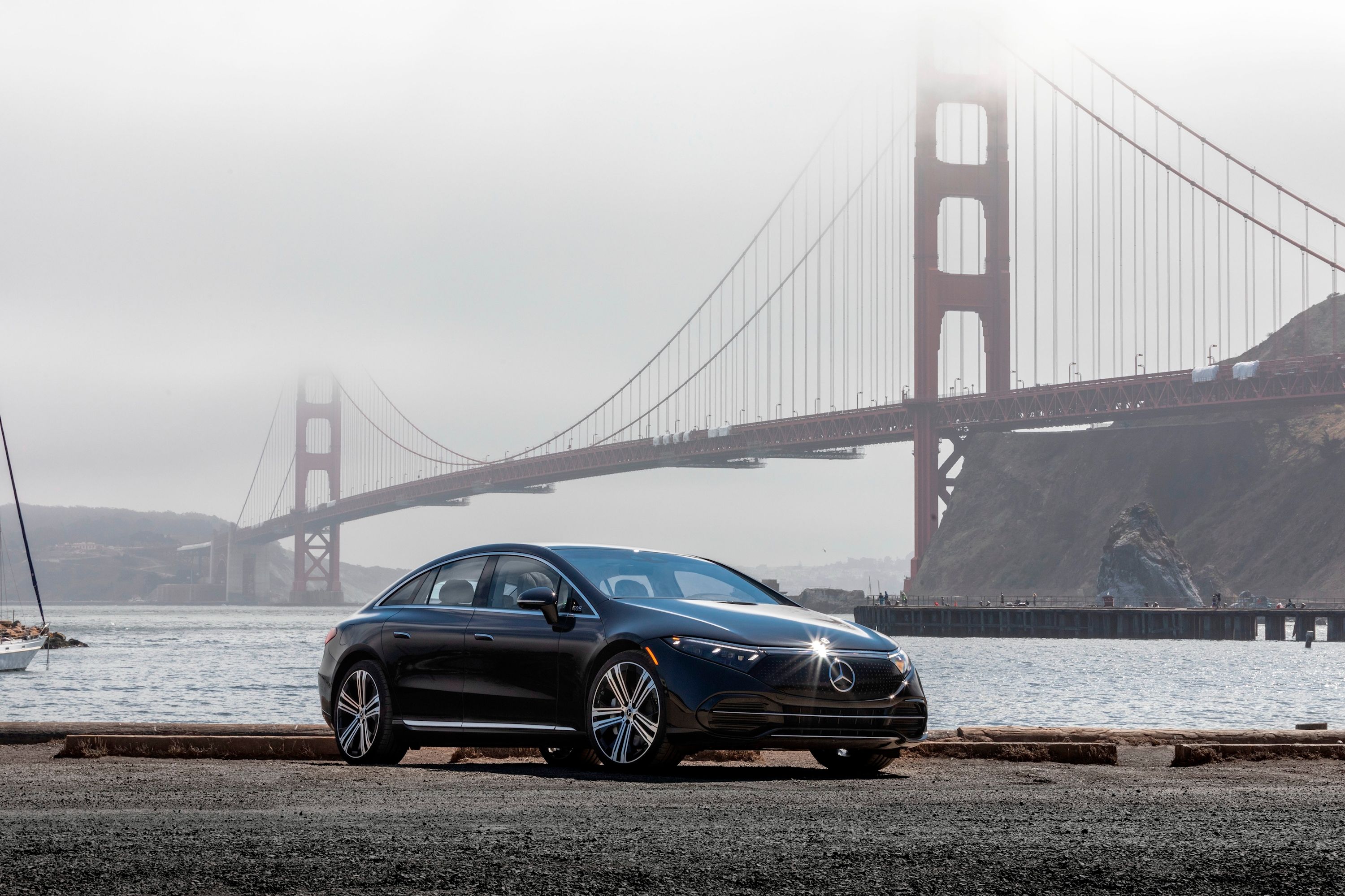
According to Mercedes-Benz, range and efficiency will define the electric era. The Germans seem to have a point, as readers usually state range and the high cost of a replacement battery as their number one concerns.
Mercedes-Benz claims to be in the lead, following a test of the EQS 450+, which went 422 miles on a single charge. It is, however, worth remembering that the Lucid Air Dream Edition can do 520 miles according to the EPA. Still, production of that particular model will be limited to just 520 units. Retailing at over $170,000, it's also not a realistic option for most.
Mercedes is looking way ahead, with a new car designed from the ground up. It's called the EQXX, and it has a drag coefficient of 0.17 and a claimed range of more than 1,000 km or more than 625 miles in American.
With Vision EQXX, Mercedes-Benz set its mission to take the next step in efficiency by breaking through technological barriers. To do so, the engineers went back to the drawing board and redid everything. They broke an EV down to its fundamentals and redesigned something new from the ground up. And by looking at some notes from the F1 team.
As such, the EQXX boasts a lightweight bionic structure, an extremely aerodynamic exterior, and a smart thermal management system. All of these details add up to create the most efficient EV ever.
First, we'll start with the EV powertrain. It has an output of 150 kW, but that's not the most impressive thing about it. It's 95% efficient, which is unheard of in the automotive world. An extremely efficient ICE car is 30% efficient, with most of the latent energy in the gas disappearing before it hits the wheels. In the EQXX, 95% of the energy from the battery reaches the wheels.
"One of the best ways to improve efficiency is to reduce losses," explains Eva Greiner, chief engineer of the electric drive system at Mercedes-Benz. "We worked on every part of the system to reduce energy consumption and losses through system design, material selection, lubrication, and heat management. And our fantastic simulation tools helped us find out quickly what works and what doesn't."
The electric powertrain is based on the one that will be used in the upcoming Mercedes-AMG One hypercar. It consists of an electric motor, transmission, and a new generation of silicon carbides.
Rather than build a bigger battery to increase range, Mercedes turned to its high-performance department (HPP), which specializes in building Hamilton's F1 engine. HPP developed an entirely new battery pack with an energy density of 400 Wh/L. It's this advancement in battery technology that made it possible to fit 100 kWh into a compact car like the Vision EQXX.
"In effect, we fitted the energy of the EQS into the vehicle dimensions of a compact car," says Adam Allsopp, Advanced Technology Director from HPP. "The battery has almost the same energy but is half the size and 30% lighter. The battery management system and power electronics have been designed with an absolute focus on reducing losses. In achieving this efficiency milestone, we learned a lot that will flow into future development programs."
Another exciting concept is called OneBox. It's essentially a separate compartment for all the electrical and electronic components. Not only is it lighter, safer, and easier to remove, but it also comes with technology gained from the F1 team. OneBox allowed the engineers to push the voltage up to 900, and it's covered by a lightweight lid partly designed by the F1 team. The lid is made from sugar-cane waste reinforced with carbon fiber, as it is on the F1 car.
The battery comes standard with active cell balancing. Instead of draining the various modules one at a time, the car draws energy evenly from the cells. All in, the battery box weighs 1,090 lbs, including OneBox. The entire car weighs just 3,858 lbs.
Thanks to the efficiency of the electric drive unit, it doesn't require a massive thermal management system. It consists of air-flow management units and a single cooling plate. The car uses a multi-source heat pump to heat both the vehicle and the battery pack. It can draw heat from the battery to warm the interior and even draws heat from dehumidifying moist ambient air.
Gone are the days of worrying about using electric ancillaries.
To power these luxuries, the EQXX uses a total of 117 solar cells on the roof. This system was created in conjunction with Fraunhofer Institute for Solar Energy Systems - Europe's largest solar energy research institute. It harvests enough energy to add up to 15 miles of range.
The solar energy is stored in a lightweight lithium-iron-phosphate battery, which supplies a climate blower, the lights, the infotainment system, and other ancillaries. Mercedes-Benz and its partners are working towards using solar power to charge the high-voltage system, too.
As for the design, we'll let you decide whether you like it or not. We like the fact that there are hints of the Mercedes-AMG One in there. One car uses F1 technology for speeding, the other uses it for evil.
We appreciate the attention to detail when it comes to using sustainable materials. It even went as far as designing a new tire design with Bridgestone that fits into the car's overall strategy.
The interior is a thing of beauty. It has a 47.5-inch display that spans the length of the car, and it has an 8K resolution. The vehicle also comes with an ethereal guide in the shape of a star-shaped cloud. This assistant can shape-shift and takes care of passenger and driver needs. It's the next step forward in Merc's "Hey Mercedes" interface.
The large screen also allows for real-time 3D navigation from satellite view all the way down to a height of just over eight feet above the car.
